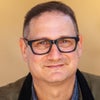Can't Get Motivated to Write? Take Some Inspiration from the Writing Routines and Rituals of Famous Artists. How the likes of Stephen King and Toni Morrison got so much work done.

Have you ever wondered what the top writers in the world do to motivate themselves each day? A magazine editor named Mason Currey was always fascinated with famous artists' writing rituals and routines, so several years ago, he began collecting them in a blog. "I just felt like it'd be fun if there was like a central clearinghouse for these anecdotes and these stories," he says.
If Currey read something interesting about, say, Stephen King's or Toni Morrison's writing routines, he would cut and paste them into his blog, which he estimates had around 12 readers the first year.
But his blog was picked up on a few sites, and slowly and steadily, Currey, who was working as an editor at Metropolis magazine, amassed a following of thousands.
The publishing world took notice and offered him a book deal. Currey released Daily Rituals: How Artists Work in 2013, which features the day-to-day working lives of creative minds. But realizing his first book was a little heavy on the Y chromosome, he followed up with Daily Rituals: Women at Work, focusing exclusively on female artists.
In total, Currey has chronicled over 300 writing rituals from the likes of such greats as F. Scott Fitzgerald, Maya Angelou, Ernest Hemingway, and Jane Austen.
On this week's episode of the Write About Now podcast, I spoke to Currey about some of his findings. Here's a sampling.
Related: This Is What 300 Writers Say Made Them Successful
Benjamin Franklin
Long before his mug appeared on the $100 bill, the founding father was a prolific writer. To get him in a creative mood, Franklin would wake up early every morning and sit in his room completely naked and read or write. He called this his daily "air bath."
Charles Schulz
The Peanuts creator drew every one of his 17,897 comic strips himself. This required an almost military-like schedule. He woke up early, showered, shaved, woke up his kids, drove them to school at 8:20 am, then he returned home where he would just doodle with a pencil and "think about the past, kind of dredge up ugly memories and things like that," he said. But once he had an idea, he would get it on paper quickly before the inspiration died down. He worked until lunch when he had a ham sandwich and milk and worked again until 4 pm.
Stephen King
The horror master is a "quota guy," according to Currey. "He starts around 8 in the morning and doesn't stop until he hits 2000 words." This usually takes him until about 1:30 pm. Then he has the rest of the day free to take naps, write letters, read, and watch the Red Sox on TV.
Anne Rice
While writing Interview with a Vampire, Rice wrote through the night and slept during the day. She says, "I needed to be alone in the still of the night, without the phone, without friends calling, with my husband sound asleep." When she had a child, she switched to daytime writing but sometimes goes nocturnal for inspiration. "It's always a search for the uninterrupted three- or four-hour stretch," she says.
Nikola Tesla
The scientist worked from noon until midnight, taking a break for dinner at the fancy Waldorf Astoria in New York City. But he would only start eating after he figured out his dinner's cubic volume.
Truman Capote
The In Cold Blood writer liked to write while lying down either in bed or stretched out on a couch. His routine started with coffee, shifted to mint tea, and ended with a martini. He wrote four or five hours a day then revised his work in the night and the next morning. Capote had some weird superstitions, too. He wouldn't allow three cigarette butts in the same ashtray, and he would never write on Fridays.
Toni Morrison. The Nobel Prize-winning author had a 9 to 5 job as an editor at Random House most of her career. Her ritual was to get up around 5 am every morning, make coffee, and "watch the light come," and then start writing until it was time to go to work.
Ludwig Van Beethoven The classical music powerhouse rose at dawn and made coffee with 60 beans per cup. Then he worked until 3 pm. After an early dinner, he took long, vigorous walks, carrying a pencil and a couple of sheets of music paper in his pocket to record his musical inspiration.
Listen to the entire episode to hear about more writing rituals, and be sure to follow the Write About Now Podcast for writing tips and strategies.











